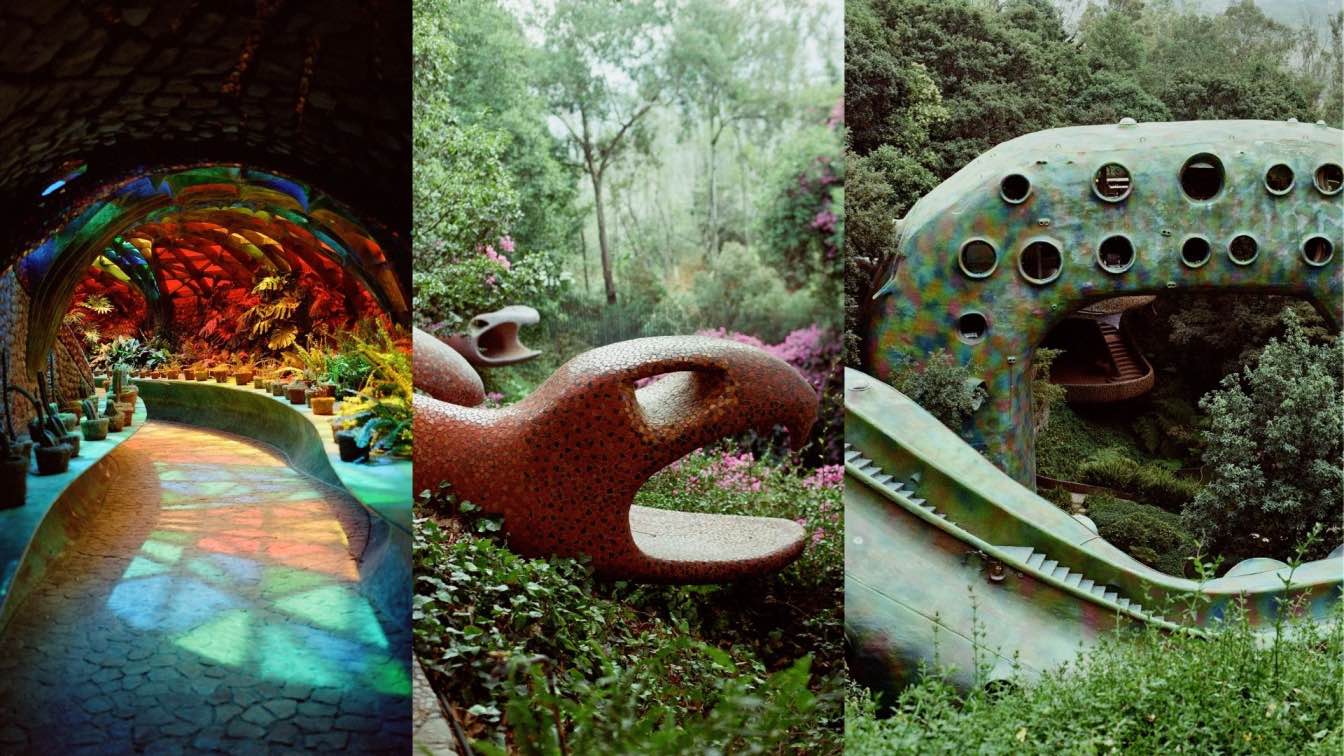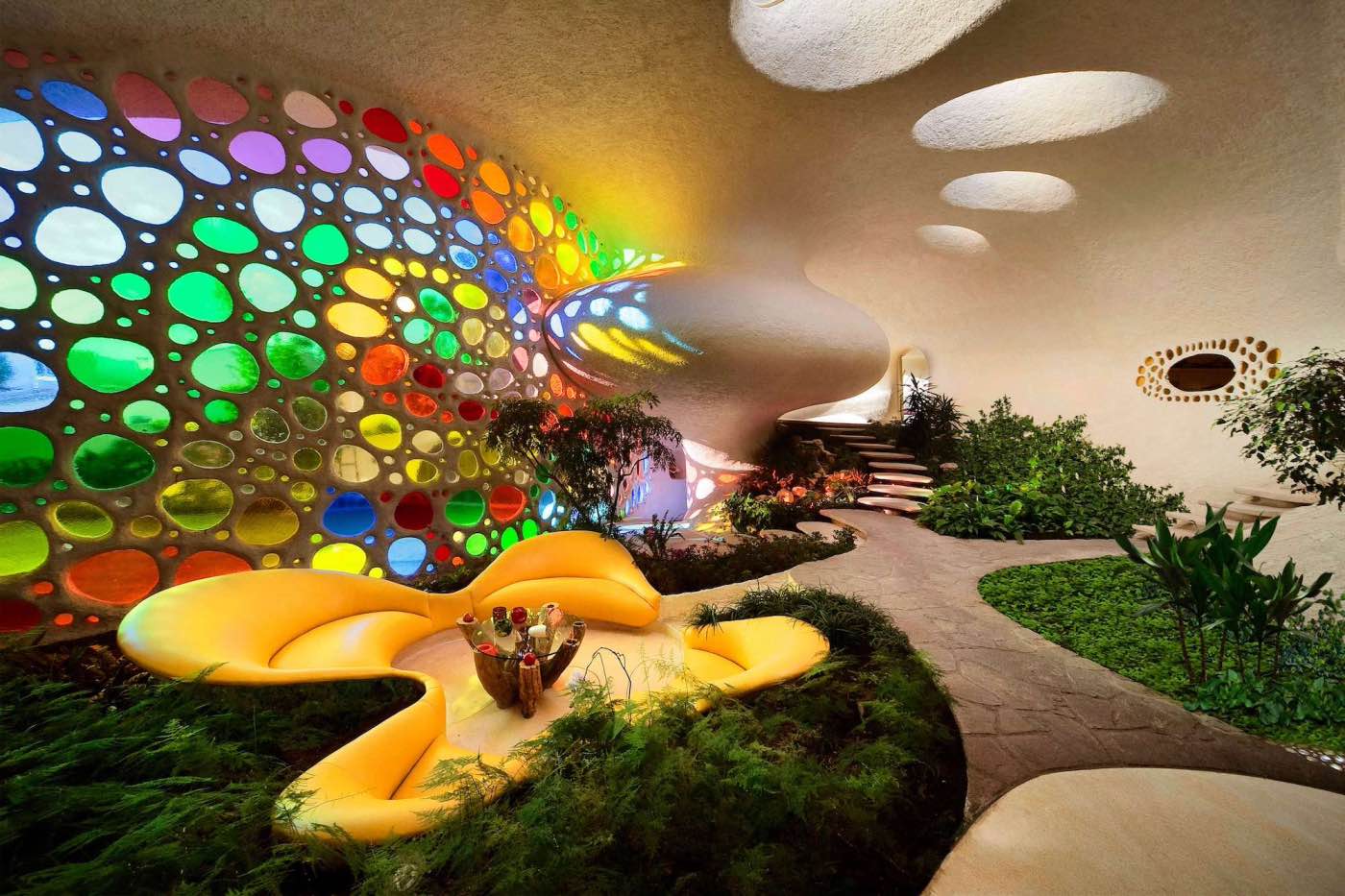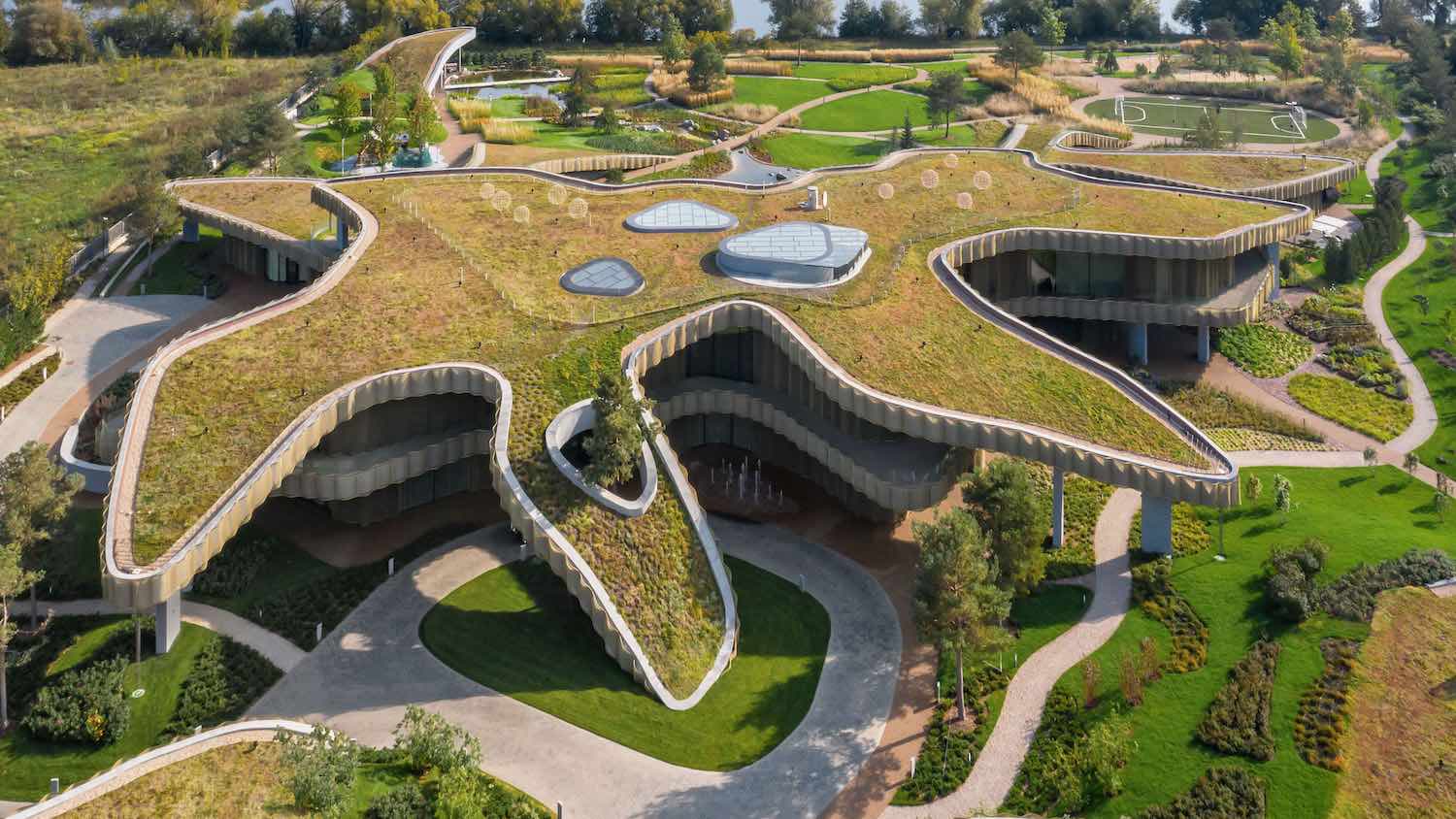El Nido de Quetzalcóatl is an architectural project created by architect Javier Senosiain. The creation of this space was a challenge at the construction level due to the irregular terrain of 5,000 square meters in which it is located, however with time it was possible to create a residential complex of 10 apartments, surrounded by gardens, water mirrors and a forest of oaks.
Located in Naucalpan, State of Mexico, El Nido de Quetzalcóatl is a habitat that seeks to integrate humans into nature, avoiding affecting the local ecosystem. Next to it, we have Parque Quetzalcóatl, another project in creation for the preservation of this green lung located to the northeast of Mexico City.
On the terrain we can find several streams that are an indispensable as they are key elements for the ecosystem; carbon dioxide is absorbed, oxygen is produced, the temperature is regulated and humidity is maintained. On the other hand, the water discarded by the apartments goes to the treatment plant that the complex has, after being treated it is used for irrigation of all green areas.
The relationship between architecture and nature isn’t just about aesthetics—it also influences how materials interact with the environment over time. The choice of roofing, for example, plays a crucial role in durability and energy efficiency, especially in climates with extreme weather variations. Experienced contractors, like this roofer, consider factors such as thermal performance and material longevity to ensure that a home’s design remains both functional and resilient.

The main structure is the body of Quetzalcóatl, created with a malleable body made of ferrocement of an iridescent color; golden emerald that combines with a deep violet blue, like the feathers of the quetzal. It ́s undulating body that submerges, penetrates and emerges, to return to take refuge in the inner world from which it comes. The cosmic serpent that establishes a mediation between heaven and earth, and whose internal volume is 6.50 m. high by 8.60 m. wide with double levels are the houses, of approximately 200m2 each. With internal vaults, walls in warm, earthy and semi-curved colors, and different windows with surprising views towards the gardens
Access to the apartments is through the serpent's back, through a long corridor one descends to the first three houses and down a staircase to the remaining seven. After you go down to a level and each side we find a house, below these there are two others. Finally at the landing of the staircase there is a suspension bridge that connects the last three houses. Entering the condominium, next to the pedestrian access, the large snake appears on the roof, which is a three-storey construction: In the upper one -jingle bell- is the water tank, below it the guardhouse and inside the machine room and warehouses for each of the departments.

Javier Senosiain Aguilar
The architect has combined the professional practice with teaching and research.
In the academic activity: He graduated with honors from the former School of Architecture of the Universidad Nacional Autónoma de Mexico (UNAM) in 1972. Since then, he has been teaching two courses at the Faculty of Architecture of the Universidad Nacional Autónoma de México: ‘Bio architecture’ which is focused on his philosophy and his work and a ‘Project Workshop’ in which he directs students’ thesis during their last year. For a period of time he held the position of Academic Secretary in such Faculty.
In the professional activity: He has developed a variety of projects: office buildings, houses, industrial plants and tourism projects and constructions.
In the research activity: He has dedicated his research to a construction material called ‘ferrocement’, used in small and oversized buildings. He has also researched pre-manufactured structures, as well as pneumatic structures which can be sprayed with polyurethane to build houses without the use of aggressive materials.
In 2006, the Board of the Faculty of Architecture of the Universidad Nacional Autónoma de Mexico granted him the Federico Mariscal ś Chair. In 2016-2017 he held an exhibition of his work in the National Museum of Architecture at the Palacio de Bellas Artes.



































































































